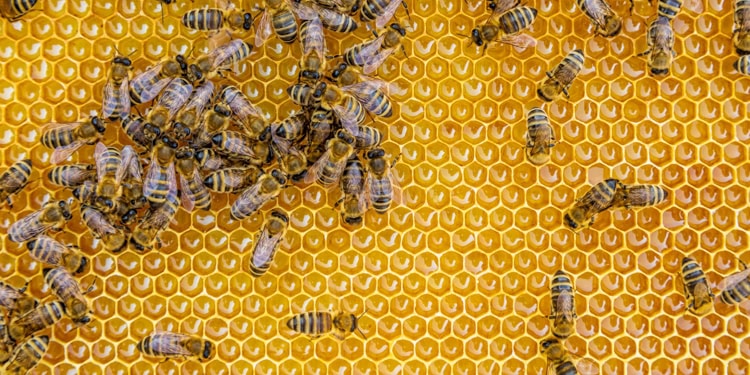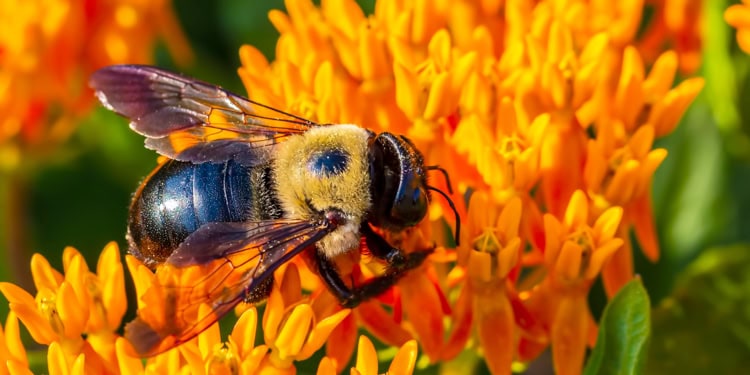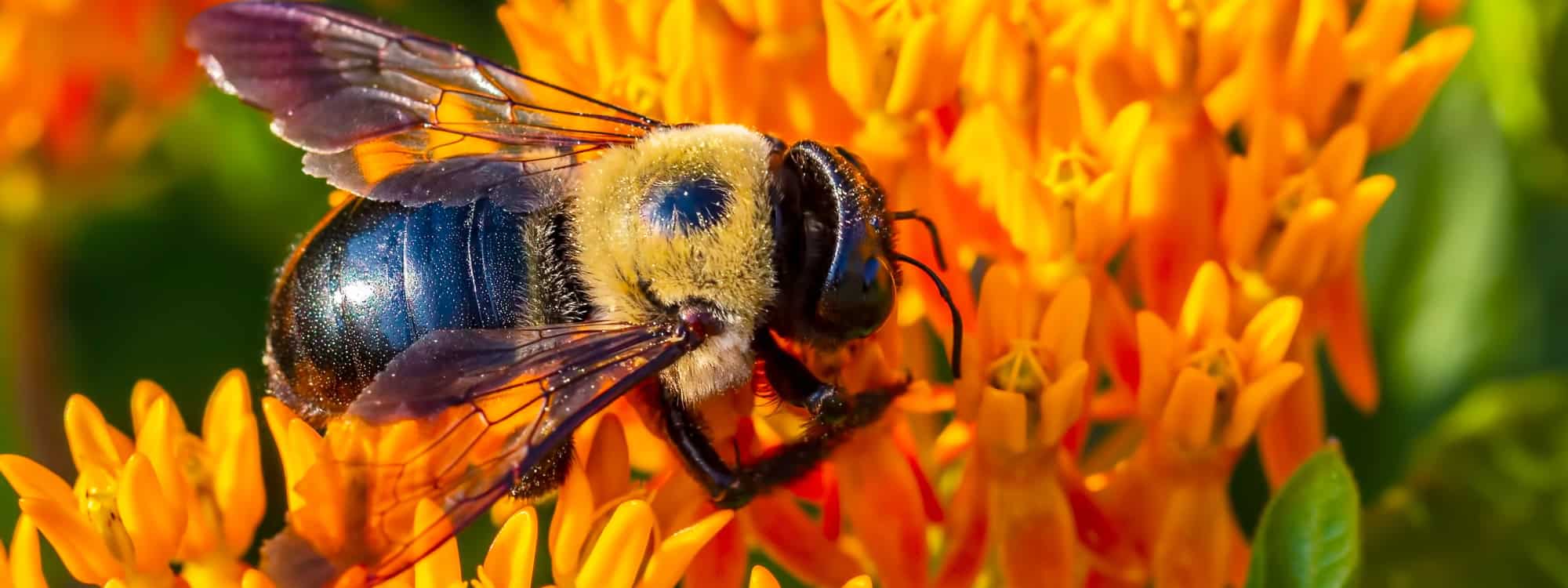Bees
Bees are a vital part of Muskoka’s ecosystem, playing a critical role in pollination and the health of local flora. While they are often misunderstood or feared, most bees are peaceful and highly beneficial. There are several species of bees that residents in Muskoka may encounter, and each has distinct characteristics. Understanding the different types of bees can help demystify their presence and encourage appreciation for their important role in nature.
In Muskoka, the most common bee species you’ll likely encounter are:

Honey Bees:
Honey bees are the most well-known of all bee species and are highly important for agricultural pollination. These social bees live in large colonies, with a single queen, worker bees, and drones. Honey bees are typically golden-yellow with black bands, and they are famous for producing honey and beeswax. While honey bees are generally gentle and will only sting in self-defense, they can become more aggressive if their hive is threatened. Their primary role in Muskoka’s ecosystem is to pollinate a wide variety of flowers, which is crucial for both wild plants and agricultural crops. Beekeeping is common in the area, where local beekeepers manage hives to produce honey, and help maintain the overall population of honey bees.
Bumble Bees:
Bumble bees are large, fuzzy bees that are well-adapted to cooler temperatures, making them particularly active in Muskoka’s climate. These bees are also social, living in smaller colonies compared to honey bees, but they are just as important for pollination. Bumble bees are especially effective at pollinating flowers with tubular shapes, such as those found in wildflowers and some garden plants. Known for their distinctive black and yellow coloration, bumble bees are typically non-aggressive and will only sting when provoked. Their ability to “buzz pollinate” makes them particularly valuable, as they help release pollen from certain flowers that other bees cannot. Bumble bee populations have been declining in some areas, so it’s important to protect their habitats and encourage local conservation efforts.


Carpenter Bees:
Carpenter bees are large, solitary bees that are often mistaken for bumble bees due to their similar size and shape. However, carpenter bees have smooth, shiny black abdomens, while bumble bees are covered in fuzz. Carpenter bees are known for burrowing into wood to create their nests, which can cause damage to wooden structures over time. Despite this, carpenter bees are valuable pollinators, particularly for plants that require pollination through “sonication” or buzzing. They can be found near forests, gardens, and wooded areas in Muskoka. While carpenter bees do not pose a significant threat to humans, female carpenter bees are capable of stinging if threatened, but they are generally non-aggressive. Male carpenter bees are territorial and often hover around nests but cannot sting.
Understanding the behaviors and roles of honey bees, bumble bees, and carpenter bees helps to highlight their importance in nature. These bees provide essential pollination services that benefit wild ecosystems, local agriculture, and the beauty of Muskoka’s landscapes. While bees may occasionally become a nuisance in gardens or around homes, they are vital to the environment and should be protected whenever possible. If you encounter a bee nest or swarm, it’s often best to consult with a local expert or beekeeper for safe management and relocation.
By appreciating and supporting the role of these beneficial insects, Muskoka residents can help foster a healthier, more vibrant ecosystem.

